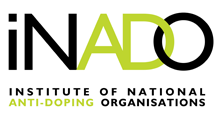Investigation report for the attention of World Anti-Doping Agency (hereinafter WADA), Montreal as part of the investigation carried out on behalf of the World Anti-Doping Agency in relation to 28 positive tests for Trimetazidine involving 23 Chinese swimmers between 1 and 3 January 2021 / Eric Cottier. - Montreal : WADA, 2024
- This is an English translation of the French original Report.
- The appendices referenced within the Report were made available to WADA Executive Committee members present for its 12 September meeting and, for reasons of data privacy, are not being published.
Findings:
-
Report finds no bias towards China and reaffirms WADA’s decision not to appeal cases was reasonable
-
Report includes findings as to how anti-doping rules and WADA’s administrative processes can be further strengthened
-
Executive Committee agrees to establish a Working Group that will focus on recommendations that can be reviewed and approved by the ExCo
In September 2024 the World Anti-Doping Agency’s (WADA’s) Executive Committee (ExCo) met in Belek, Republic of Türkiye, where it discussed the final reasoned report presented virtually by Independent Prosecutor, Mr. Eric Cottier, regarding his review of WADA’s handling of the China Anti-Doping Agency’s (CHINADA's) no-fault contamination cases involving 23 swimmers from China in 2021.
In his opening remarks to the ExCo, Mr. Cottier said: “I am pleased to confirm that my conclusions, which were published via my interim report on 9 July, have not changed. The information in the file shows that WADA has done its work autonomously, independently and professionally, and that there is no evidence to the contrary. WADA has applied the rules to which its activity is subject.”
Mr. Cottier then noted that his final reasoned report went beyond the two questions that he was posed for the review, offering a number of findings, including that:
-
Clarification of certain anti-doping rules should be considered as part of the World Anti-Doping Code and International Standards Update Process that is currently underway, in particular with the regards to specific situations of group contamination; and
-
Formalization of certain administrative processes should be considered within WADA.
Mr. Cottier then turned his attention to CHINADA and, consistent with WADA’s previously stated view, said: “As far as the Chinese agency is concerned, it is clear that certain rules of the World Anti-Doping Code have not been applied. This is regrettable, but in the end, it does not change the outcome of the cases and the acceptance of the contamination hypothesis.”
